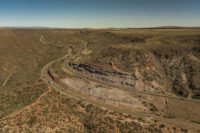The coronavirus pandemic has taken the U.S. economy on a roller coaster ride, and the construction industry has been feeling the effects since the start. But as we embark on the pandemic’s third year, contractors in Arizona and the Southwest, at least, can expect to see the track begin to even out.
Take the Phoenix market, which expanded by a whopping 22% in 2020 only to experience a sustained contraction in 2021. This year, though, construction growth should surge ahead of 2020 levels. The residential sector has a big role to play, but some of the biggest ticket projects are coming from tech firms that are building plants in the Phoenix area as they look for alternatives to the soaring costs in Silicon Valley. Still, the roadblocks have not disappeared. Shortages of workers and materials continue to hinder progress. And while advanced technology and materials solutions create important efficiencies, they also come with risks that, along with other issues on the horizon, should be a top management priority.
The biggest influences on the Southwest region’s 2022 construction economy include:
Continuing pressure from an imbalanced supply chain. Contractors can expect more supply chain chaos, with ongoing impacts to cash-flow cycles, costs, schedules and project budgets. Many firms will be forced to work more effectively with existing suppliers, shift toward domestic outlets and solidify relationships with backups. The disruptions could threaten both the financial health of firms and their ability to secure insurance against added risks. Builders’ risk is one concern, with possible rate increases of 30% or more for large frame projects, especially with added exposure to events like hurricanes and fires.
Ongoing worker shortages. This long-term issue has no single solution and is growing in severity. The average age of today’s construction workers is 43, with even more retirements looming, so labor experts estimate that nearly 1 million workers will be needed to meet demand over the next two years. The industry must continue to promote paid on-the-job apprenticeship training programs. Vocational skills training and re-skilling programs can also help, especially with retention, as turnover reaches a worrisome 21.4%. But the best avenue to attract younger workers—especially millennials and Gen Zers not eager to take on college debt—may be the technology boom that’s reshaping the industry. Drones, robotics and digital tools are increasingly important and have put tech-dependent construction jobs in a more positive light for prospective young workers.
Booming innovation in technology and materials, despite the risks. The impact of advances on these fronts will grow in 2022. From drone use (increasing 239% annually) to smart project management tools and materials such as engineered timber and “bendable” concrete, the industry has more options than ever before to trim budgets, increase safety and boost efficiency. The tech revolution alone could improve productivity by 60% and create $1.6 trillion annually in incremental global value. But there are downsides to progress. Bendable concrete, for example, has a smaller carbon footprint and greater durability than standard mixes, thus reducing repair costs, but it’s also more expensive to use than regular concrete, requiring careful preconstruction efforts. Firms will need to be prepared for these challenges in the year ahead.




